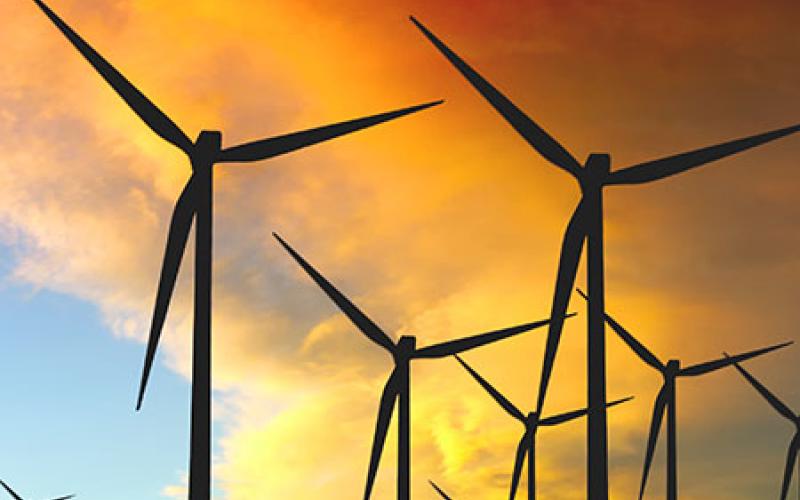The conundrum of siting wind farms

The conundrum of siting wind farms
Although wind power is often hailed as one of the ultimate sustainable energy sources, siting wind farms can be tricky. A recent study examined the trade-offs between building wind farms close to population centers or in remote regions with more suitable wind conditions. The results can help policymakers locate new wind development more efficiently.
Original Paper:
Lamy, Julian V., P. Jaramillo, I. L. Azavedo, R. Wiser, “Should we build wind farms close to load or invest in transmission to access better wind resources in remote areas? A case study in the MISO region.” Energy Policy 96. (2016): 341-350. DOI: 10.1016/j.enpol.2016.06.011.
Wind power is becoming a competitive and reliable source of sustainable electricity the world over. By 2015, the world’s potential electrical output from wind farms was more than double Germany’s entire generation capacity. However, deciding where to build wind farms can be challenging. In addition to securing support from the community and obtaining environmental and land use permits, wind farms also need ideal wind conditions and suitable infrastructure.
In a study published in Energy Policy, researchers from Carnegie Mellon University and the Lawrence Berkeley National Laboratory designed a model to compare the cost of new wind energy development across different geographies. The researchers looked at the U.S. Midwest, where most of the country’s highest quality wind sites are found; picture the endless plains of North Dakota. In addition, several states in the region — including Illinois, Minnesota, and Missouri — have recently adopted ambitious renewable energy targets.
The study aimed to provide a blueprint for policymakers and project developers who need to evaluate sites for wind development. There are clear trade-offs at play. It is often cheaper to build wind farms close to population centers, where people demand the most electricity. The reason is simple: transporting electricity is a costly business. Building wind farms far from population centers can significantly increase overall project costs. However, wind farms in remote locations might be able to produce a lot more electricity depending on the geography. Another important consideration is the time of electricity production. If windier sites can generate electricity during peak hours, when people use the most amount of electricity, they can replace expensive conventional generation like natural gas and diesel power plants.
The model presented in the study pulls from a set of hypothetical wind farms. The objective is to meet a 40 terawatt-hour output — equivalent to the Midwestern states’ total wind power targets — while minimizing installation and transmission costs. The researchers chose Illinois as a population center, the Minnesota-Iowa region as a medium-quality wind site, and the North Dakota-South Dakota region for a high-quality wind site. They considered the wind farms’ power generation potential, their actual energy output, and the time of day the wind farms produce most electricity.
The most important finding of the study concerns the concept of “transmission cost premiums” — the additional cost of electricity transport from a wind site. For example, Illinois already has robust transmission infrastructure. As a result, the median upgrade cost in North Dakota is about 23 times higher than in Illinois. If only transmission costs are considered, this comparison would clearly favor wind development closer to Illinois. However, wind farms in North and South Dakota have a capacity factor — the ratio of actual output versus maximum potential output — of 43 percent, compared with 40 percent in Illinois. While this difference might seem small, it can increase capital cost for the less efficient farms for over $1.4 billion to meet the same target.
The model presented in this study can be applicable in other geographies around the world where high quality wind sites are located far away from population centers. Western and eastern China, and northern Scotland and the rest of the UK are two notable examples. Wind power will likely play a significant role in transforming our electricity markets, which is a central piece of climate change mitigation.




